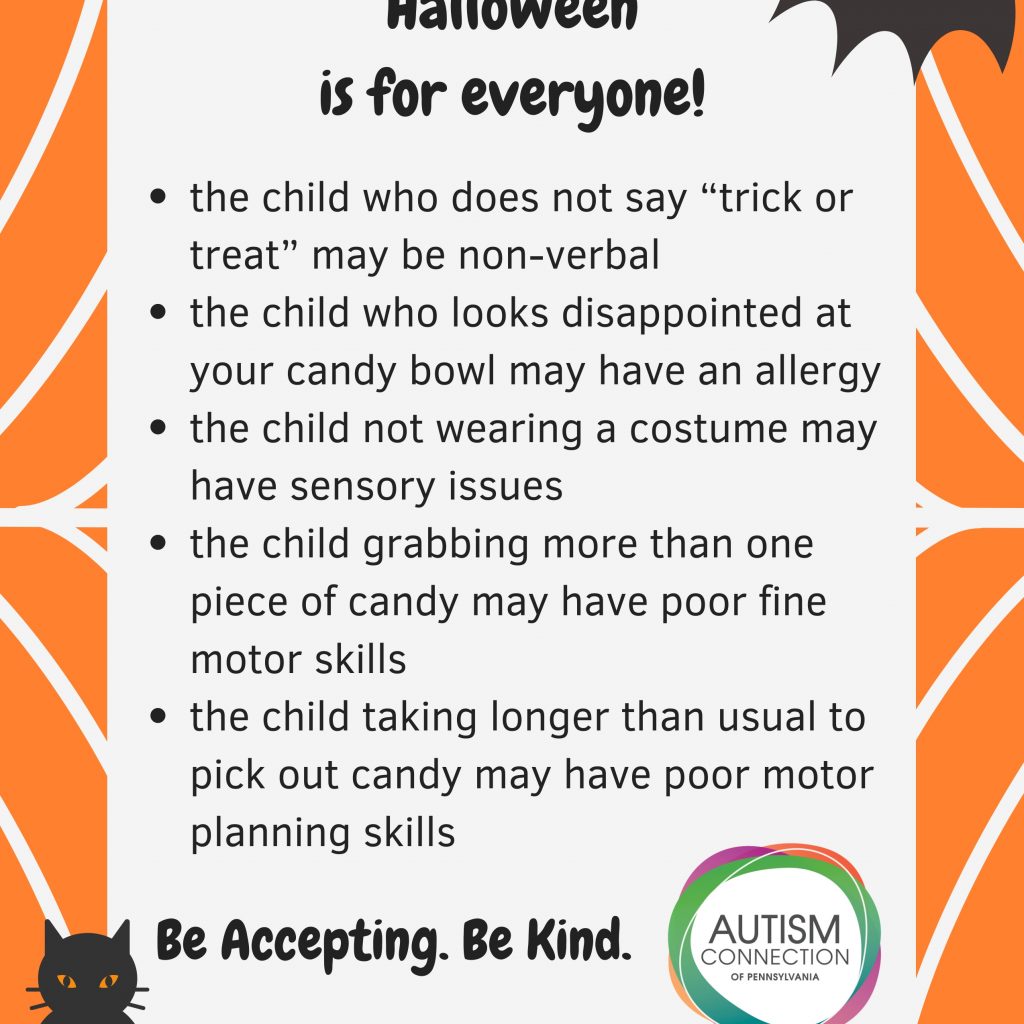Tricks for Autism-Friendly Halloween Treats
“My son is 3 years old and has autism,” Omairis Taylor wrote on a Facebook post that has now been shared 151,000 times, adding, “Please allow him (or anyone with a BLUE BUCKET) to enjoy this day.” In the now viral post, Taylor explained that adults handing out candy the previous year would wait for her son to say “trick or treat” before giving him candy, requiring her to explain to each of them that he is nonverbal. Rather than deal with the added stress of having to explain her son’s disorder multiple times this year, Taylor came up with the creative solution of using a blue bucket to represent it, thus encouraging greater awareness and acceptance of Autism Spectrum Disorder (ASD) for the upcoming holiday.
Although many individuals have embraced this strategy, others expressed concern about exacerbating the stigma that comes with ASD, while also putting the burden of creating an inclusive environment on children with ASD and their parents. Whether you’re a fan of the blue bucket or not, the following four tricks can be helpful additions or alternatives to make this Halloween more inclusive and, more importantly, more fun!
1. Prevent sensory overload with sensory toys, headphones, and/or ear plugs.
Make sure to prepare your child for the potentially unsettling sounds and decorations they might see by first explaining that they are just pretend and perhaps showing him or her how they work before you go trick or treating. However, you can keep sensory overload to a minimum by bringing along a sensory toy, headphones, and/or ear plugs when loud noises are present. Alternatively, Autism Connection of PA will also be hosting a Sensory Friendly Trunk or Treat event for any children who prefer a more accommodating environment.
2. Plan a costume dress rehearsal.
Have your child try on his or her costume a few times before Halloween so they can get used to how it feels and determine if the material is comfortable enough to wear for a couple of hours. Consider opting for a larger size so your child can wear their own clothes underneath.
3. Bring some buddies.
Neurotypical friends and siblings are great allies to have while trick-or-treating. They can remind your child of the rules of trick-or-treating and help guide them through the process, even doing some of the talking for them. Buddies can also help keep an extra eye on children who have a tendency to wander, while still making them feel included in their peer group.
4. Gamify the experience.
Some children with ASD prefer more structure around their activities, so it might be helpful to turn the experience into a game of some sort. For example, you might want to create a map of every house you will go to and cross them off after each visit. You can also encourage your child to count how many chocolate candies vs fruity candies he or she gets to create a kind of scientific experiment about which type of candy is more common.
No matter what you choose to do for the holiday, make sure you’re focused first on just enjoying the time with family and friends. Remember that Halloween is about creative expression, so celebrate what makes your child unique!

